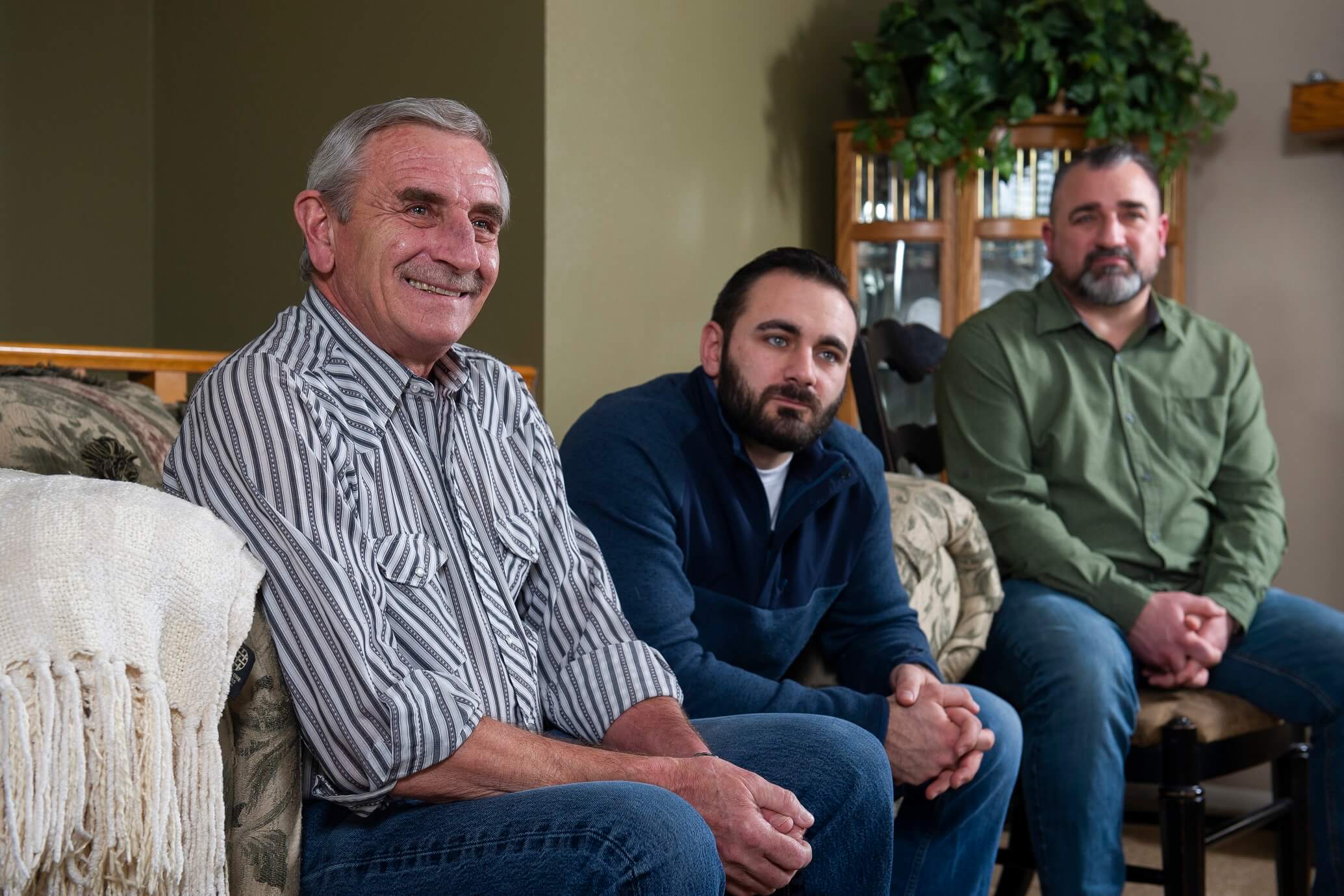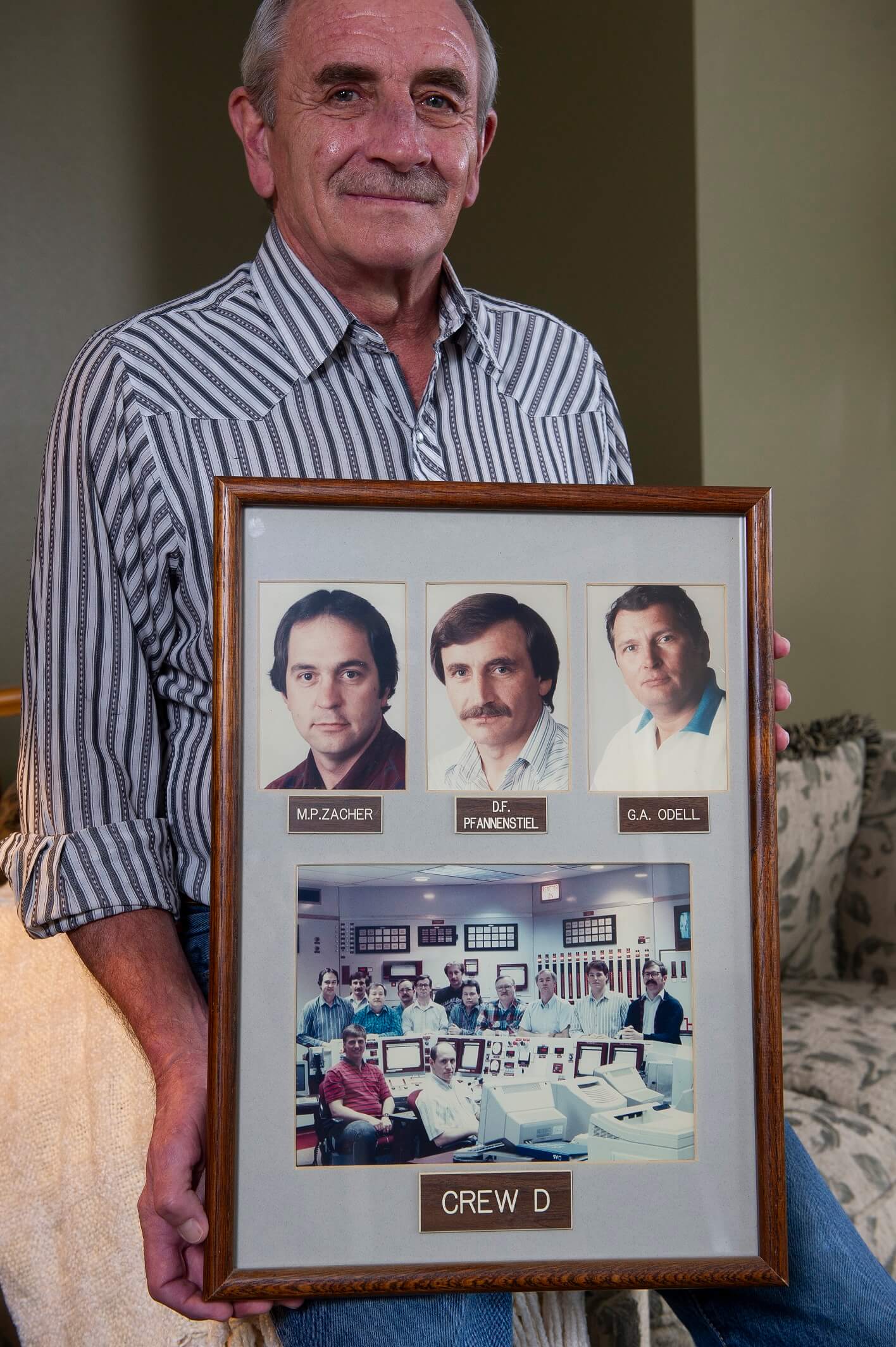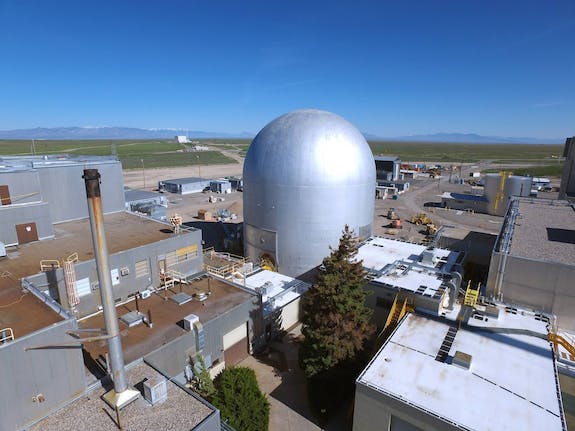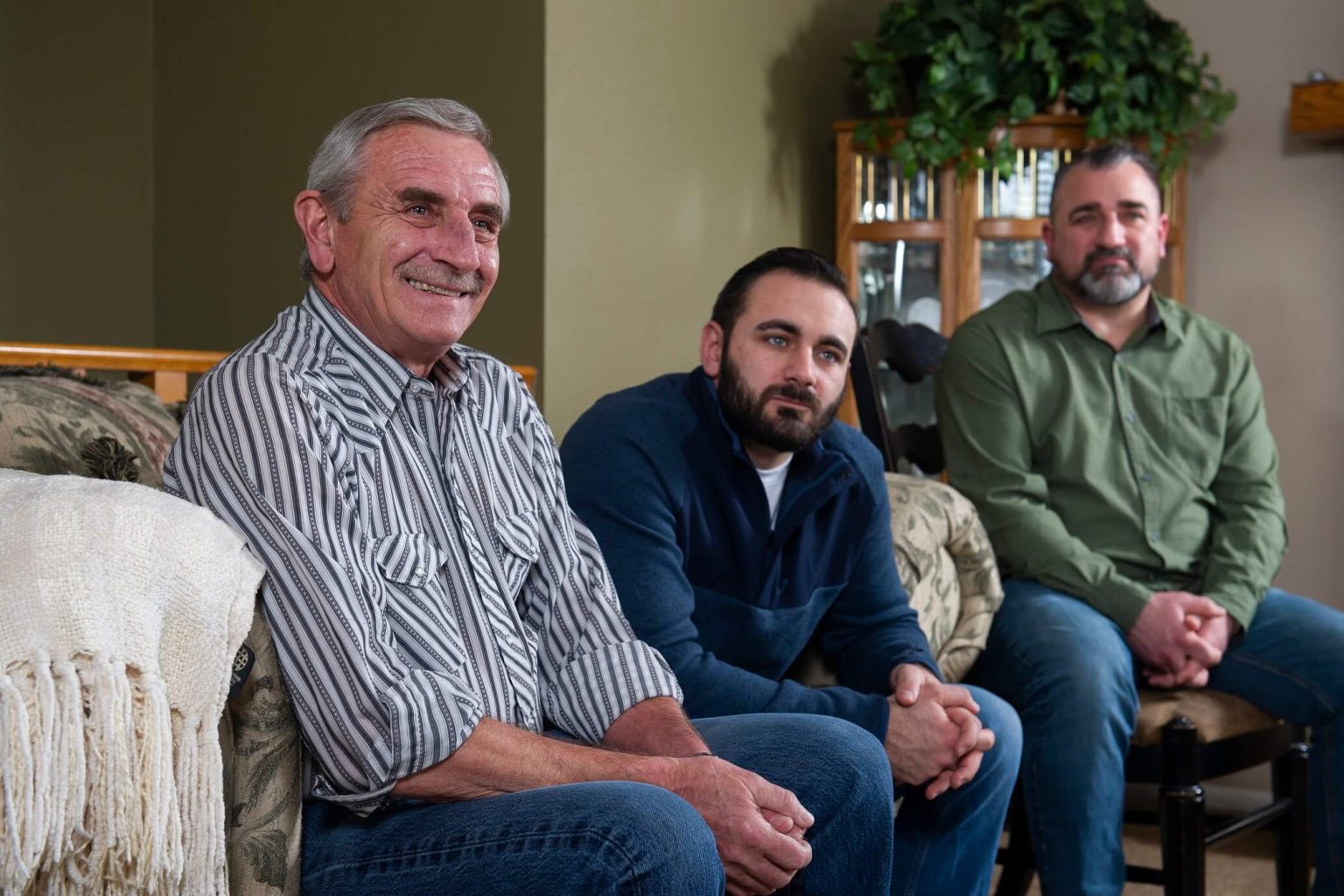Little did Darrell Pfannenstiel know when he came to work at Argonne National Laboratory-West in 1977 that after retiring in 2010 he would one day see his youngest son, Kevin – who had not yet even been born in 1977 – working there.
Forty years later, it made for some interesting after-work conversations. Was it necessary to drill a sample from the Experimental Breeder Reactor-II containment dome to determine its makeup, as the younger Pfannenstiel’s crew did? “I could have told you what it was,” said the father.
Sometimes a job chooses a person as much as the person chooses it. For Darrell, who grew up on a ranch near Longmont, Colorado, it was the U.S. Navy that brought him to Idaho Falls in 1970. The job and place agreed with him – finding his bride, Pauline Charbonneau, didn’t hurt – so when he was discharged from the Navy in 1977, he was happy to hear ANL-West was hiring.
“You had to be physically present to get an interview,” he said. Given the experience he had operating reactors on submarines and as a trainer, it looked like a good bet. So with his wife and toddler son, Casey, and $800, the family piled into their Pontiac LeMans and left Charleston, South Carolina, for Idaho.

Hired as a nuclear power plant operator, Pfannenstiel arrived in the heyday of EBR-II, which operated from 1964 to 1994. For two years of training, he immersed himself in the details of the power generation plant and nuclear fuel handling systems, gaining qualification in 1979 as a senior operator.
In the Navy, his work had been with light water reactors. EBR-II, a sodium-cooled breeder reactor, was a completely different animal. “I learned so much about fast reactor technology,” he said. By the early ’90s, he’d been promoted to the role of lead reactor operations shift supervisor, overseeing the day-to-day activities of the alternate shift supervisor, the shift foreman, and 10 power plant operators.
In 1994, however, EBR-II and the Integral Fast Reactor (IFR) program it supported had its funding cut and received shutdown orders. Darrell Pfannenstiel’s duties shifted to the termination and defueling activities, and the startup and operation of the Sodium Process Facility. By 1998, he was operations manager at the EBR-II/SPF Complex.
Darrell Pfannenstiel was as invested as anyone in the culture of ANL-West, which he summed up with the sentence, “We depended on people knowing what they were doing.”

All the while, he and Pauline were busy raising four children: Casey, Christine, Kenny and Kevin. Did he talk about work at home? “All the time,” said Casey, who is a project manager in INL’s National & Homeland Security directorate. That career decision came after 20 years in the U.S. Army as a Blackhawk helicopter pilot and trainer. After serving in Iraq, Afghanistan, Honduras, South Korea and Germany, he moved back to Idaho Falls with his family in 2014, but took a part-time job ferrying people to and from oil rigs in the Gulf of Mexico for six months of the year.
“I had spent less time with my family than when I was in the Army,” he said. The N&HS job, dealing with financials and budgets, suits him fine. “A lot of the people we deal with are [Department of Defense], and because of my experience I understand pretty well what they want.”
Of all the children, it was Kevin who followed most closely in his father’s footsteps, coming to work in 2015 as a laborer at the former ANL-West campus, now INL’s Materials & Fuels Complex, and eventually enrolling in the welder helper program (he expects to qualify as a nuclear welder in September 2019).
This was five years after his father had retired, and their conversations about EBR-II, which was scheduled for demolition, were bittersweet. “He loved that reactor and I was tearing it down,” he said.
The landmark steel-and-concrete containment dome at EBR-II had been on DOE’s decontamination and demolition list since 2007. The last remaining sodium coolant was removed, and the reactor cavity was grouted with concrete, creating a clean floor inside. Had demolition occurred, the dome would have been cut off at the floor level, about 10 feet above ground, leaving a flat, cone-shaped cap.
The EBR-II dome got a reprieve when Battelle Energy Alliance, INL’s management and operations contractor, determined it might have possible uses. In 2017, DOE’s Office of Nuclear Energy (DOE-NE) became its landlord, taking over from the Office of Environmental Management (DOE-EM).
This is a hopeful sign to Darrell Pfannenstiel. “I’m really encouraged,” he said.

Kevin Pfannenstiel enjoys the family feeling that still exists at MFC, and hears nothing but good things about his dad. “They all say they miss him,” he said. “They tell me he was a very fair guy. I guess he knew how to talk to people in a good way. He had a lot of knowledge about the place, too.”
If there’s one thing about the job he likes, it’s that there is something different to do every day. With the restart of the Transient Reactor Test Facility and the Space and Security Power Systems Facility, the mission at MFC is looking as promising as it has in a long time, Darrell Pfannenstiel said.
“It’s not just a job,” he said. “There’s a future out there, and you’ve got to keep working at it.”
The latest Pfannenstiel to join INL’s ranks is Casey’s son Kyle, one of the lab’s summer 2019 interns. A journalism/political science major at University of Idaho, Kyle said he didn’t know much about INL when he was growing up. “I don’t have a technical background, so when they started talking nuclear my eyes would kind of glaze over,” he said.
When the family moved to Idaho Falls in 2014, he started getting to know his grandfather better, and as a communications intern, he is learning how deep his family roots go. Having the last name Pfannenstiel sets him apart from the Smiths and Joneses of the world. At INL, “Two times a week I’ll run into someone who says, ‘I knew your grandpa,’” he said.
On a tour of INL given to the interns, one of the places they visited was the EBR-II control room. “They said, ‘This is where your grandfather sat,’” he said. “It’s been so much fun to learn about all the interesting science and technology going on here.”







